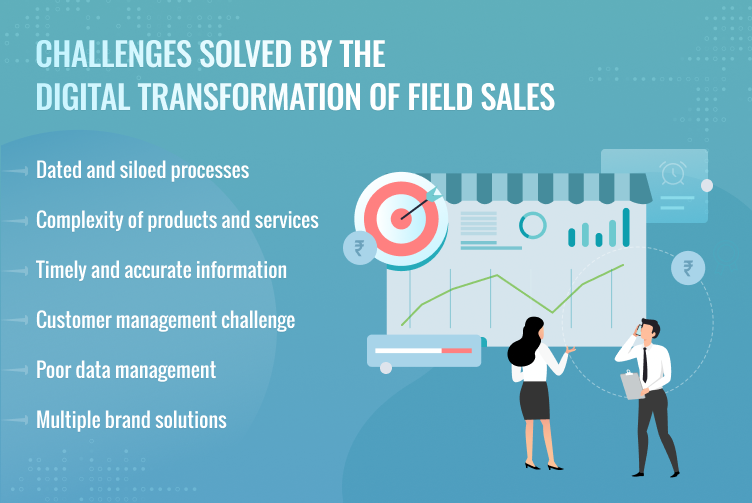The pandemic hit businesses hard with disruptions and additional costs on enabling workforce safety. Despite that, the retail industry saw sales volumes remaining on par or even slightly better than the pre-covid years. What has changed though, is the type of channels that have cropped up in the last 2 years for sales and distribution.
The expanding influence of the digital economy coupled with the demand for convenience and secure shopping experiences by customers has led to paradigm shifts in the way sales cycles have pushed through to fulfilment in the last 2 years.
Today, from the neighbourhood grocery store to full-size hypermarkets in suburban and city areas have incorporated multiple digital channels into their business. From as simple as telephonic ordering to delivery services and online shopping via dedicated apps, there are more stakeholders involved in the retail fulfilment ecosystem than ever before.
While consumers are basking in the good times created by such an evolution, the real challenge of such a scenario is felt in the sales operations of brands. From the outside, it looks like they have a very good ecosystem in place to meet consumer demands, but in reality, achieving transparent visibility across the entire spectrum of sales and distribution involved in channel sales is proving to be a herculean endeavour.
Let us examine the major roadblocks that obstruct end-to-end visibility for leaders into channel sales operations:
Channel parties exist as business entities themselves
In most cases, retail brands leverage existing distribution networks put in place by channel partners who themselves operate as separate business entities. This means that they follow their own standards of work principles, custom data and workflow management, separate marketing and sales practices, and much more. While there are contractual obligations, it is not a wise move to restrict their freedom of operations as they would have better knowledge of what flavour of sales works best in a particular locality. That makes it harder for the brand to standardise practices, including data formats, reporting frequencies, content, etc.
Lack of alignment of priorities
For a brand, their product and unique marketing campaigns or sales approaches are important and need to be positioned in the market at the desired time frame with a strategy for deliberate execution. However, taking a cue from the previous point, channel partners have their own business priorities. They carry multiple products, some from competing brands. They are more likely to focus on executing a marketing and sales approach for a product that can recognize revenue for them faster than the others. Also, channel partners often have first-hand knowledge about local market preferences and demands through field agents and established communication lines with consumer sales touchpoints. In practice, what happens is, distributor priorities and brand priorities are often only aligned in areas of specific overlap. Since the brand doesn’t have visibility into the plans, schedules, and ongoing activities of other brands or of these distributors, the data they factor into their calculations is usually incomplete, inaccurate, or out of date.
Inability to forecast business
For a business, one of the key aspects that define their success in a market is their ability to predict sales volumes and use the insight to plan inventory, budgets, and resource allocation. If it was a direct sales force that handled end-to-end retail fulfilment, brands would have a better and clear view of the sales cycle and can plan in confidence. However, as mentioned before, today’s channel sales cover a vast plethora of touchpoints. Sales via so many offline and digital channels lead to extreme data proliferation. Siloed data architectures become common within the enterprise’s sales function. The end result is that data comes in from various touchpoints, gets collected at many different places, based on individual schedules, and in a range of formats. Thus it becomes nearly impossible for channel managers or sales leaders to meaningfully predict anything without aggregating and organizing the data flowing in from the farthest consumer touchpoints.
Presale insight distribution challenges
Retail brands often have insights and information that can help in boosting sales and marketing efforts that help cement products as favourites for consumers. This information may be in the form of leads or marketing collateral, interactive engagement models, intuitive demonstrations, etc. With channel sales and its associated web of complex consumer touchpoint interactions, it becomes difficult to propagate these insights to field sales or channel executives because of the middle layer complexities involved. This results in the loss of considerable revenue opportunities in the long run and makes the sales cycle stagnant due to fewer leads in the pipeline.
Inefficient reporting
Since different channel partners follow different work models, their reporting capabilities would also include a great deal of diversity. However, for brands, this creates a huge problem as they will not be able to seamlessly acquire real-time reports on how different product lines are faring in different market conditions and customer demographics. They also can’t transparently evaluate channel partner performance owing to a lack of consistency in their KPIs and performance evaluation metric standards.
Retail brands face these challenges due to the rising complexity of channel sales as they lack a collaborative distribution and channel management link that can iron out inefficiencies across the entire supply and demand ecosystem. However, if they can adopt a technology-driven approach to unify data from across distribution, field sales, and customer touchpoints, then these challenges can be easily rectified. Brands can enjoy better ROI while distributors and customers can enjoy improved and personalized convenience. Get in touch with us to know more about leveraging a platform like iSteer to unify the data in your retail sales operations and manage discrepancies and challenges involved in channel sales.




